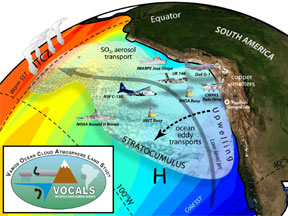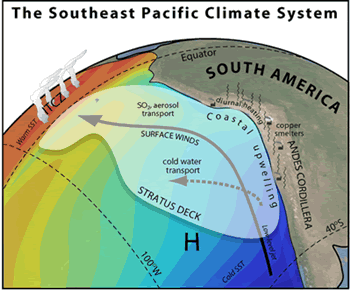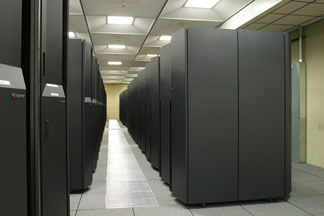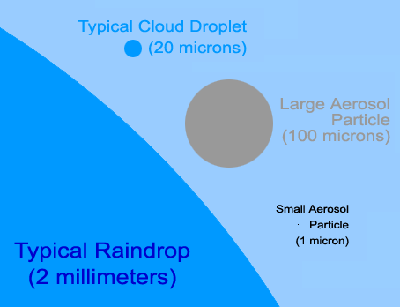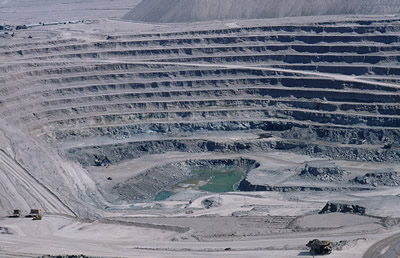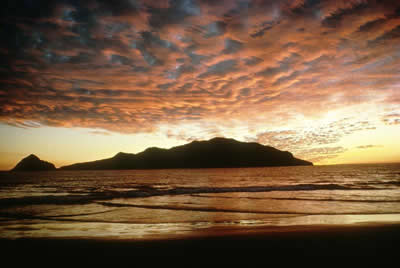Click on image for full size
Image Courtesy of Robert Wood
Introduction to VOCALS Science
During the month of October 2008, a team of scientists is going to the Southeastern Pacific Ocean and parts of Chile and Peru. They will make observations and take measurements to learn more about how the ocean, atmosphere, and land work together to affect climate. It's a big project, so it will need special equipment such as airplanes, research ships, buoys, and weather stations to collect data. This project is called VOCALS.
Scientists know that this area is important. It affects climate. VOCALS will help them make better global climate models and predictions about global warming.
Scientists in the VOCALS field campaign are very interested in collecting data that is needed to address scientific questions. They want to learn more about how tiny particulates in the air known as aerosols affect cloud formation. They also want to learn more about the chemical and physical processes that happen between the upper ocean, the land, and the atmosphere.
Learning more about how human activity impacts the Southeast Pacific climate system will be an important part of VOCALS. The scientists will explore how aerosols from copper smelters affect how stratocumulous clouds are formed. They will also look at how changes in the climate impact the fishing industry in Chile and Peru.
It turns out that October is the best month of the year for the VOCALS field experiment. It is the month when there are the most stratocumulus clouds over the Southeastern Pacific and when the winds are the strongest. It is also the time of year when the ocean and atmosphere most closely work together.
For updates from the scientists during the VOCALS campaign, check out the Postcards from the Field. VOCALS Scientists will be posting updates during the month of October 2008.


